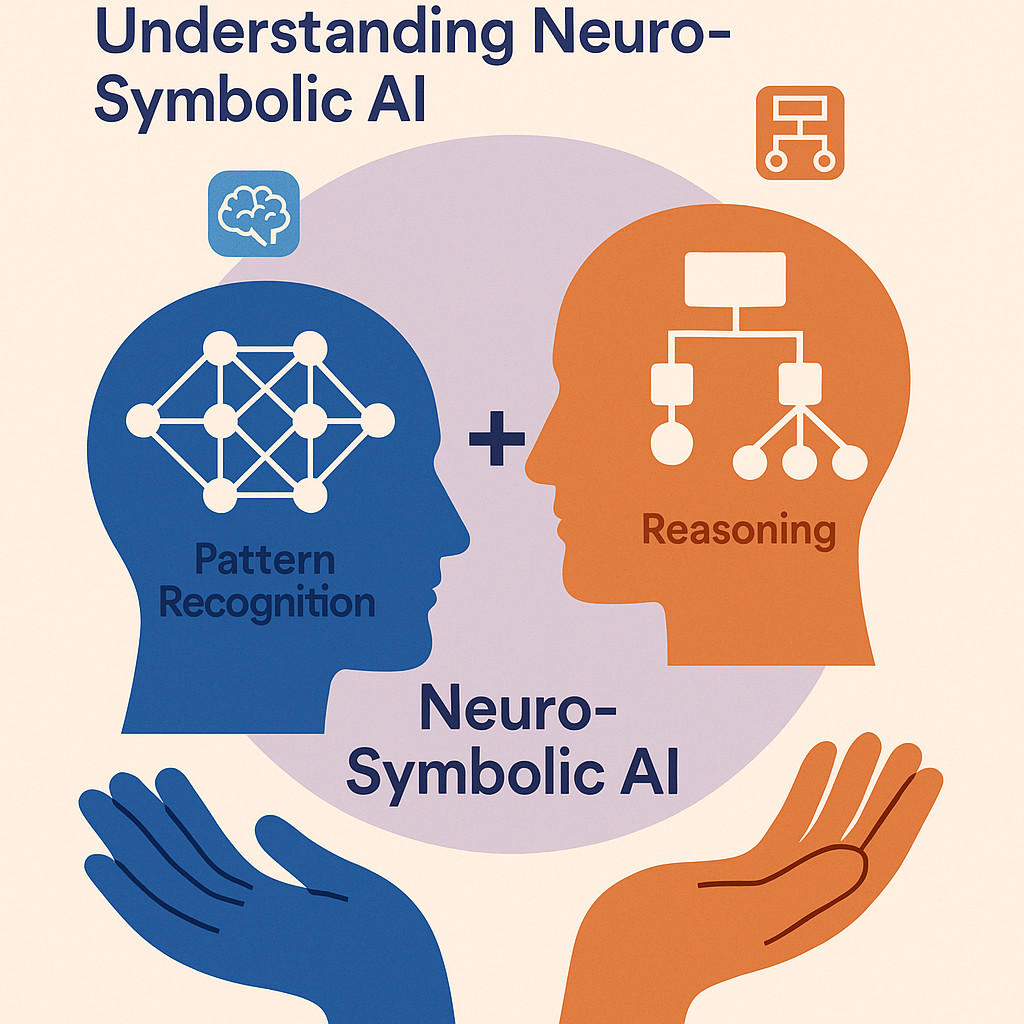Understanding Neuro-Symbolic AI: The Future of AI

Imagine you're trying to solve a complex puzzle. On one side, you have incredible pattern recognition abilities. You can instantly spot similarities, recognize faces in a crowd, and understand the mood of a conversation just by reading between the lines. On the other side, you have logical reasoning skills. You can follow step-by-step instructions, apply rules consistently, and explain exactly why you reached a particular conclusion.
Now, what if we could build AI systems that combine both of these powerful capabilities? That's exactly what neuro-symbolic AI does, and it's revolutionizing how we think about artificial intelligence.
What Makes AI "Smart" Today?
Most AI systems you interact with daily (like ChatGPT, image recognition apps, or recommendation engines) are primarily neural systems. Think of them as incredibly sophisticated pattern-matching machines. They're trained on massive amounts of data and become remarkably good at recognizing patterns and making predictions based on what they've seen before.
These systems excel at understanding natural language, recognizing images and objects, generating creative content, and finding subtle patterns in complex data.
However, they also have limitations. They can't always explain their reasoning, they sometimes make mistakes that seem obvious to humans, they struggle with tasks requiring step-by-step logical thinking, and they can be inconsistent when dealing with rules or constraints.
The Power of Symbolic Reasoning
On the other hand, symbolic AI systems work more like a human following a recipe or solving a math problem. They use explicit rules, logic, and structured knowledge to make decisions. These systems are highly predictable and consistent, able to explain every step of their reasoning, excellent at following complex rules and constraints, and reliable for tasks requiring precise logical thinking.
But they're also limited. They struggle with ambiguity and uncertainty, they can't easily learn from examples, they're rigid and don't adapt well to new situations, and they require extensive manual programming for each new domain.
The Magic of Combining Both Approaches
Neuro-symbolic AI brings together the best of both worlds. It's like having a team where one member is incredibly intuitive and creative, while the other is methodical and logical, working together seamlessly.
Here's how this combination works in practice. A neuro-symbolic system can understand a complex, ambiguous question using its neural components and then apply logical reasoning to work through the answer step-by-step using its symbolic components.
These systems can learn from examples and data like neural networks, but they can also explain their reasoning process clearly, like symbolic systems. Although they require less data with better quality.
They adapt to new situations and handle uncertainty well, while still following important rules and constraints consistently.
Why This Matters for Everyone
Neuro-symbolic AI represents a significant step toward AI systems that are both powerful and trustworthy. This matters because of transparency (when AI systems can explain their reasoning, we can better understand and trust their decisions, especially in critical applications where money is involved like any business), reliability (by combining pattern recognition with logical reasoning, these systems make fewer inexplicable errors and behave more predictably), efficiency (instead of needing massive amounts of data for every new task, neuro-symbolic systems can leverage both learned patterns and logical rules, making them more efficient to develop and deploy), and human-AI collaboration (when AI systems can explain their thinking process, it becomes easier for humans to collaborate with them, correct them when needed, and learn from them).
The Future is Hybrid
As we move forward, the most impactful AI systems will likely be those that combine multiple approaches rather than relying on just one. Neuro-symbolic AI represents this evolution, creating systems that are not just smart, but also reliable, explainable, and trustworthy.
This hybrid approach opens up possibilities for AI applications in areas where both creativity and precision are crucial, where decisions need to be both intuitive and logical, and where the stakes are too high for "black box" solutions.
The future of AI isn't about choosing between intuition and logic. It's about systems that excel at both, working together to solve problems in ways that neither could achieve alone.
